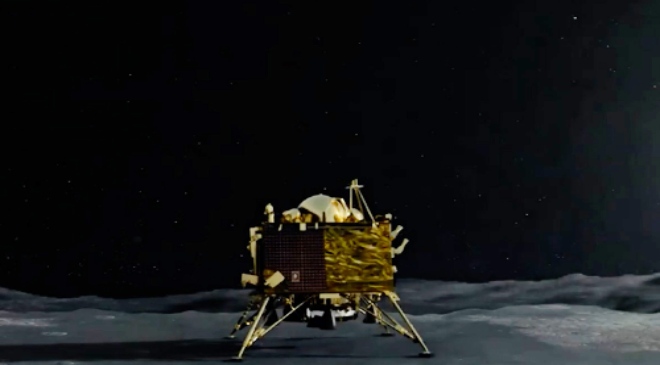The total life of Chandrayaan-3 is 14 Earth days, equal to one lunar day, and ISRO may try to stretch it for one more day; it is likely to conclude its operation in seven days; read more here
After India scripted history with Indian Space Research Organisation’s (ISRO) ambitious third moon mission, Chandrayaan-3 is set to conclude its operations in the next seven days.
This comes as ISRO said that two or the three missions of the Chandrayaan-3 were achieved. The first 2 missions — demonstration of a safe and soft landing on the lunar surface, and demonstration of rover movement on the moon — have been successful.
While the third mission, which is the in-situ scientific experiments on the moon are currently underway.
The mission made India the fourth country to accomplish a landing on the lunar surface, and the first to reach the unexplored south pole of the moon.
CHANDRAYAAN-3’S LIFE SPAN ON MOON
The total life of Chandrayaan-3 is 14 Earth days, equal to one lunar day, and ISRO may try to stretch it for one more day.
However, this will be determined on whether there is enough power to keep the Vikram Lander and Pragyan Rover functioning well.
Till now, the mission has completed 7 days, and it has 7 more days to go.
Read More: Aditya L1 Mission: ISRO Shares First Glimpse Of Spacecraft Ahead of Launch to Study Sun | Details
WHY IS CHANDRAYAAN-3 MISSION ABOUT TO END SOON?
The mission is set to end soon due to the phenomenon of ‘lunar night.”
This is essentially a period in which moon’s surface is not exposed to the sun, making it impossible for the Pragyan rover — which is solar powered — to continue its work.
This period will last for one lunar day, or 14 Earth days.
WHY DOES THE LUNAR NIGHT HAPPEN?
Lunar night takes place due to the moon’s rotation, which lasts for 28 Earth days. During this time, the moon is covered in darkness.
Read More: Chandrayaan-3: Vikram Lander as Clicked By Pragyan Rover On Moon’s Surface
WHAT HAS IT CHANDRAYAAN-3 OBSERVED SO FAR?
Earlier this week, ISRO released the first observations from the ChaSTE payload onboard Vikram.
ChaSTE is the Chandra’s Surface Thermophysical Experiment, and it measures the temperature profile of the lunar topsoil around the pole. This is done to understand the thermal behaviour of the Moon’s surface.
ISRO also came out with a graph illustrating the temperature variations of the lunar surface/near-surface at various depths, as recorded during the probe’s penetration.
This accounted as the first such profile of the lunar south pole. Detailed observations are underway, the space agency said.
Apart from this, the Laser-Induced Breakdown Spectroscope instrument on the ‘Pragyan’ rover of Chandrayaan-3 has unambiguously confirmed the presence of sulphur on the lunar surface near south pole, through first-ever in-situ measurements, ISRO said on Tuesday.
The rover also detected aluminium, calcium, iron, chromium, titanium, manganese, silicon and oxygen, as expected.
“Thorough investigation regarding the presence of Hydrogen is underway,” ISRO said.
CHANDRYAAN-3
India on August 23 scripted history as ISRO’s ambitious third Moon mission Chandrayaan-3’s Lander Module (LM) touched down on the lunar surface.
Prime Minister Narendra Modi on Saturday announced the decision to name the spot where Chandrayaan-3 Vikram lander made soft landing as ‘Shiv Shakti Point’ and the site where the Chandrayaan-2 lander crash-landed on the Moon’s surface in 2019 would be known as “Tiranga Point”.
Also, August 23, the day the Chandrayaan-3 lander touched down on the lunar surface, would be celebrated as National Space Day’, Modi had said.
With agency, reporter inputs





































